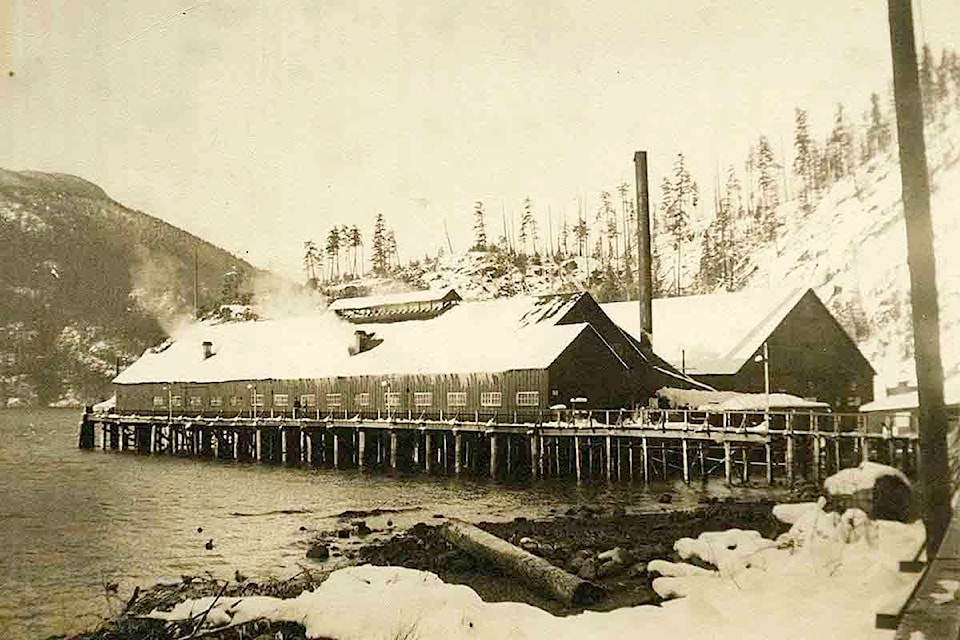By Erika Anderson
Museum at Campbell River
Located at the North West end of West Redonda Island, Redonda Bay is often overlooked when compared to the flashier bays on the island, Refuge Cove and Teakerne Arm.
Today, even in the summer, it lies silent and uninhabited. That wasn’t always the case.
Logging operations started in the bay around 1907, and in the 1920s a cannery opened, bringing many people with it. At that time Syd Vicary and his daughter opened a store and post office, and the Union Steamships made the bay one of their regular stops. This sudden boom wasn’t an unusual story at a time when canneries were scattered across the coast and remote outposts were home to countless logging camps. Seemingly everyone in the region laboured at turning the coast’s natural resources into paycheques.
The Redonda Bay cannery was the site of a peculiar feat of creative engineering. The SS Transfer, an old Fraser River sternwheeler, was brought up on the beach at Redonda Bay and was used to generate steam power to run the cannery machinery. It also served as a bunkhouse when additional accommodations were needed. It certainly made for an interesting retirement for this ship, which in its earlier years ran a ferry service between New Westminster and Chilliwack.
When the Depression hit, the cannery shut down, and along with the buildings and other infrastructure, the SS Transfer lay abandoned. In the 1940s when things began to improve economically after the Depression, the cannery was re-opened by Frances Millerd and Company. Although the cannery could be revived, the SS Transfer was rotting on the beach. It was dismantled and the boilers were repurposed and moved into the cannery.
The re-opening of the cannery marked the beginning of a more prosperous time for Redonda Bay. Logging had started up again and there were now enough residents to support a small school. By the late 1940s the population was nearing one hundred. In 1949 a Government wharf was built, there was scheduled air service, logging operations were expanding, and the community was booming. However, by the mid-1950s the boom town went bust when the cannery closed and the economic prosperity that came with it dwindled. The store managed to remain open until 1964.
A couple years later a forest fire burned down much of the timber in the area. After this time the Bay was left uninhabited other than the occasional squatter making use of the buildings that remained from more prosperous times. In the 1970s the BC Forest Service set up a minimum-security prison camp for a time so that the inmates could thin out some of the trees to improve the market value of the timber that remained.
At some point the old buildings were taken down as a safety precaution, so there isn’t too much to see anymore. Old log chutes and skid roads provide hints of the Bay’s past. Although not much remains of the settlement, photographs, stories and archival records help us to piece together the history of abandoned places like Redonda Bay. It’s not the same as seeing it for yourself, but with a little imagination you can hear the steaming of the boiler and the clanking of the cannery machinery starting up on a chilly morning.
West Redonda Island is one of the islands featured in the Museum’s summer Historic Boat Tours. See www.crmuseum.ca/historic-boat-tours to find out more.
